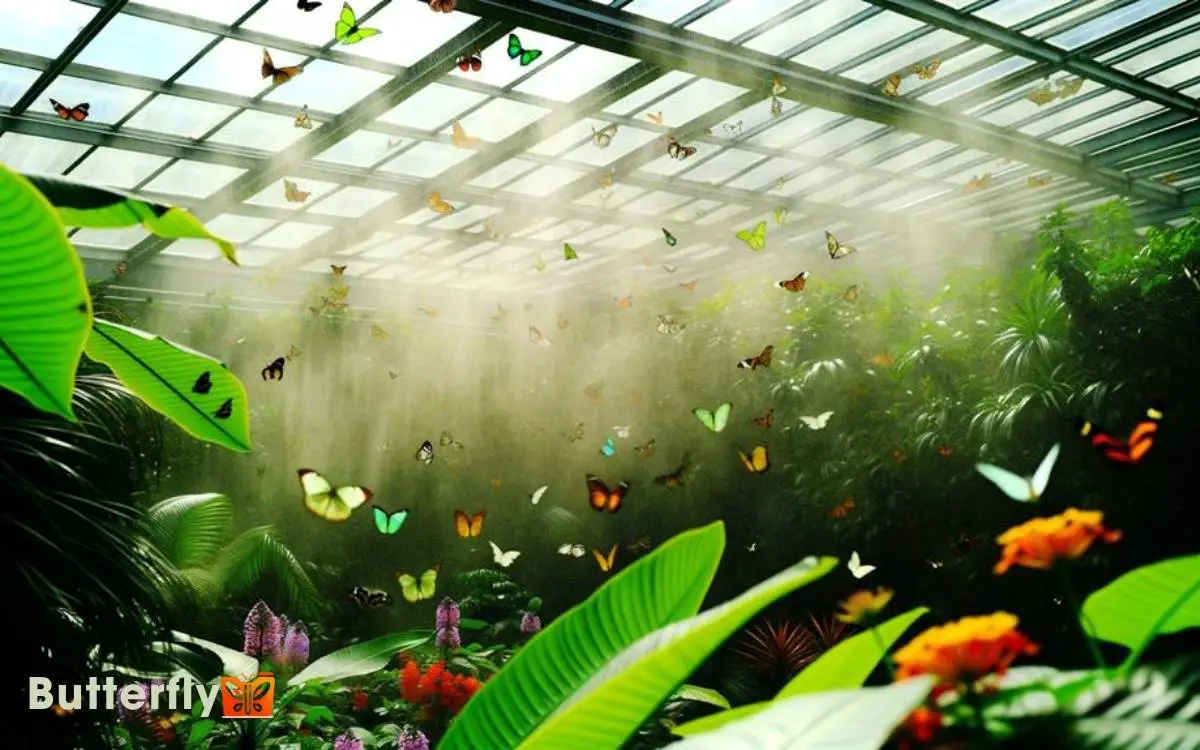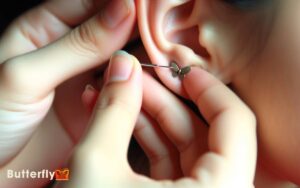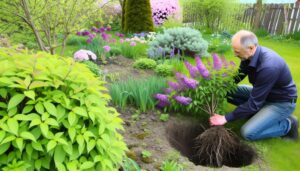How Do Butterfly Houses Work? Exploring Functionality!
Butterfly houses work by meticulously controlling temperature and humidity with climate control systems, maintaining it between 75-85°F and 70-80% humidity.
Automated sensors manage these conditions along with air circulation to guarantee butterfly safety. Select native plants that provide nectar year-round and create an ideal habitat.
Caterpillar nurseries with controlled environments and specific host plants support larval growth. Supplying diverse nectar sources and avoiding pesticides promotes a thriving butterfly population.
Beneficial insects help control pests naturally. Through precise management of these elements, butterfly houses offer a sustainable, educational environment. To uncover more intricate details about these operations, keep exploring.

Key Takeaways
Climate Control Systems
Climate control systems in butterfly houses are carefully designed to maintain ideal temperature and humidity levels for butterfly survival and reproduction.
You’ll need to guarantee the environment mimics tropical climates, typically maintaining temperatures between 75-85°F and humidity levels around 70-80%.
Use automated sensors to continuously monitor and adjust these parameters. Heaters, misters, and fans are essential tools.
Heaters keep the temperature constant, while misters add moisture to the air, ensuring the best humidity. Fans help with air circulation, preventing stagnant conditions that could harm the butterflies.
Selecting the Right Plants
Choosing the right plants for a butterfly house requires careful consideration of native species and their seasonal bloom timing.
You’ll need to select plants that provide nectar throughout the entire butterfly season to guarantee a continuous food source.
It’s vital to match the plants to the local climate and the specific needs of the butterflies you aim to attract.
Native Plant Choices
To attract butterflies effectively, you need to select native plants that cater to the specific needs of local butterfly species. Native plants provide essential nectar sources and host plants for larvae.
They are adapted to your local climate and soil conditions, making them resilient and beneficial for butterflies. Consider plants with varied heights, colors, and bloom periods to support different butterfly species.
| Plant Name | Butterfly Species Attracted | Benefits |
|---|---|---|
| Milkweed | Monarch | Host plant for larvae |
| Purple Coneflower | Painted Lady | Rich nectar source |
| Joe-Pye Weed | Swallowtail | Tall structure, ample nectar |
| Aster | Pearl Crescent | Late-season nectar provider |
| Black-eyed Susan | American Lady | Easy to grow, attracts many |
Seasonal Bloom Timing
Understanding the seasonal bloom timing of your native plants guarantees that there’s a continuous supply of nectar and host plants for butterflies throughout the year.
Start by identifying early, mid, and late-season bloomers. Early bloomers like milkweed provide essential nectar during spring.
Mid-season plants, such as coneflowers, sustain butterflies in the summer. Late bloomers, like asters, secure food availability in the fall. Each plant’s flowering period should overlap slightly with others to bridge any gaps.
Research your local ecosystem to select species that thrive in your climate.
By staggering the bloom times, you’ll support various butterfly species at different life stages, ensuring a robust, self-sustaining butterfly habitat. This meticulous planning keeps your butterfly house vibrant and ecologically balanced.
Designing the Habitat
Crafting an ideal butterfly habitat involves meticulously selecting native plants that provide both nectar for adult butterflies and host plants for caterpillars. You’ll need to research which plants are native to your area, as they’re best suited for local butterfly species.
Include a variety of flowering plants that bloom at different times to guarantee a continuous food source. Position taller plants at the back and shorter ones in front to create a layered effect, mimicking natural landscapes.
Incorporate flat stones for basking, and avoid using pesticides, as they can harm butterflies. Ensure the habitat has partial sunlight and some shaded areas, allowing butterflies to regulate their body temperature. This balanced environment promotes a thriving butterfly population.
Caterpillar Nurseries
Securing the survival of butterflies starts with providing dedicated caterpillar nurseries, where larvae can safely feed and grow. You need to create a controlled environment that mimics natural conditions.
Begin by selecting host plants specific to the butterfly species you’re raising, making sure they’re pesticide-free. These plants serve as both food and habitat for the caterpillars.
Enclose the nursery with fine mesh to prevent predators and parasites from entering. Maintain a consistent temperature and humidity level, as fluctuations can stress the larvae. Regularly clean the nursery to prevent mold and bacterial growth, which can be harmful.
Additionally, monitor the caterpillars for signs of disease or distress, intervening when necessary. This meticulous care ensures healthy larvae that will eventually metamorphose into vibrant butterflies.
Feeding the Butterflies
To guarantee the butterflies thrive, you must provide diverse nectar sources. Select specific plant varieties that cater to their dietary needs and consider how seasonal changes affect food availability.
Nectar Source Options
Butterflies thrive on a variety of nectar sources, each providing essential nutrients that support their vibrant energy and reproductive health. You should prioritize providing a diverse range of nectar-rich flowers, as different species are attracted to various colors and scents.
Common nectar sources include lantana, zinnias, and butterfly bushes, all known for their high nectar production. Make sure that your plants are free of pesticides, as these chemicals can be harmful to butterflies.
Additionally, consider offering supplemental nectar in feeders. Use a solution of one part sugar to four parts water, mimicking natural nectar. Regularly clean the feeders to prevent mold growth.
Plant Varieties Needed
Selecting the right plant varieties is essential for providing the necessary nutrients and habitat that butterflies need to flourish. You should focus on both nectar plants and host plants.
Nectar plants, like butterfly bush (Buddleja) and lantana, supply adult butterflies with the energy they need. Host plants, such as milkweed (Asclepias) for monarchs and parsley for swallowtails, are vital for laying eggs and caterpillar development.
Choose native species when possible, as they’re adapted to local butterfly populations. Ensure a diverse selection to cater to varying butterfly species’ needs. Additionally, plants like verbena and zinnias offer abundant nectar, while dill and fennel serve as excellent host plants.
This careful selection supports a thriving butterfly ecosystem.
Seasonal Food Availability
Ensuring seasonal food availability is key to supporting the dietary needs of butterflies throughout the year. You need to provide a diverse range of nectar-producing flowers that bloom in different seasons.
In spring and summer, plants like milkweed and coneflower are essential. Shift to late-blooming varieties such as asters and goldenrods in autumn.
For winter, offer alternative food sources like sugar-water feeders or overripe fruit. Consistently monitor and replenish these resources. Butterflies also require moist soil or shallow water sources for hydration and mineral intake.
By carefully selecting and maintaining these food sources, you’ll create a sustainable environment that meets the nutritional needs of butterflies year-round, ensuring their health and longevity in your butterfly house.
Water Sources
To maintain ideal hydration for butterflies in your house, provide shallow water sources with gently sloping sides for easy access.
This setup allows butterflies to sip water without the risk of drowning. Be sure to frequently replenish and clean the water to prevent contamination and bacterial growth.
Here are four essential tips:
- Use shallow dishes: Opt for a depth of 1-2 inches.
- Add pebbles or sand: These provide perching spots and prevent slipping.
- Change water daily: Fresh water minimizes bacterial proliferation.
- Consider sugar water: A weak sugar solution can mimic natural nectar.
Managing Pests
To manage pests effectively in your butterfly house, you should use natural pest control methods.
Attracting beneficial insects, like ladybugs and lacewings, can help maintain a balanced habitat. It’s important to monitor and maintain this balance to guarantee the health and safety of your butterflies.
Natural Pest Control
Have you ever wondered how butterfly houses can help manage garden pests naturally and efficiently? Butterfly houses provide a habitat for butterflies, which in turn contribute to natural pest control.
Here’s how:
- Predation on Larvae: Some butterfly species, like the Harvester, have larvae that feed on aphids, reducing their population.
- Pollination: While pollinating, butterflies can inadvertently control pests by moving them away from plants.
- Natural Enemies Attraction: Butterfly houses attract other beneficial insects that prey on pests.
- Regulation of Ecosystem: Butterflies are part of a balanced ecosystem, where their presence helps maintain the natural predator-prey dynamics.
Beneficial Insects Attraction
Butterfly houses not only support the presence of butterflies but also attract other beneficial insects that play a significant role in pest management.
Ladybugs, lacewings, and parasitic wasps are among the insects commonly drawn to these environments. These insects are natural predators of common garden pests like aphids, mites, and caterpillars.
By providing a habitat for these beneficial insects, you enhance your garden’s ecological balance and reduce the need for chemical pesticides. The shelter and nectar sources within butterfly houses create an inviting environment, encouraging these helpful insects to stay and thrive.
Consequently, your garden benefits from a natural, sustainable method of pest control, promoting healthier plants and a more vibrant ecosystem.
Habitat Balance Maintenance
Maintaining habitat balance in your garden involves strategic pest management practices that leverage natural predators and minimize chemical interventions. Focus on creating an ecosystem where beneficial insects thrive.
- Introduce Ladybugs: Ladybugs consume aphids, mites, and other pests. Release them in the early evening when temperatures are cooler.
- Plant Diverse Flora: A variety of plants attracts different beneficial insects. Include nectar-rich flowers to support adult parasitic wasps and predatory beetles.
- Install Birdhouses: Birds eat many pest insects. Attract insectivorous birds by providing nesting sites and water sources.
- Avoid Pesticides: Chemicals can kill beneficial insects and disrupt ecological balance. Use organic alternatives like neem oil or insecticidal soap.
Butterfly Lifecycles
Through a fascinating sequence of stages egg, larva, pupa, and adult the lifecycle of a butterfly reveals nature’s incredible processes of growth and transformation.
| Stage | Description |
|---|---|
| Egg | Laid on host plants; contains developing embryo. |
| Larva | Caterpillar stage; intense feeding and growth. |
| Pupa | Chrysalis formation; metamorphosis occurs. |
| Adult | Emerges from chrysalis; capable of reproduction. |
Understanding these stages helps you appreciate the delicate balance within butterfly houses.
Visitor Interaction
In a butterfly house, visitors can engage directly with the delicate insects by observing their behaviors, feeding them with nectar, and even participating in educational programs that elucidate butterfly conservation and biology.
You’ll find that these interactions are designed to foster a deeper understanding and appreciation of these intricate creatures.
Here are some ways you can get involved:
- Observation: Watch butterflies as they flutter, feed, and interact within their habitat.
- Feeding: Provide nectar to butterflies and watch them drink from your hand.
- Educational Programs: Attend talks or workshops that cover butterfly anatomy, lifecycle, and ecological significance.
- Interactive Displays: Explore touchscreens and exhibits that offer detailed information about different butterfly species.
These activities encourage learning and a hands-on experience with butterflies.
Conservation Efforts
By engaging with butterflies up close, you contribute to broader conservation efforts that aim to protect these species and their habitats.
Butterfly houses aren’t just about observation; they’re critical for breeding programs that sustain endangered species. When you visit, you support habitat restoration and awareness campaigns. These facilities carefully regulate temperature, humidity, and plant life to mimic natural ecosystems, ensuring butterflies can thrive. Understanding the butterfly doors cost breakdown helps visitors appreciate the investment required to create secure, climate-controlled environments. By funding these initiatives, visitors play a direct role in protecting fragile butterfly populations for future generations.
| Conservation Aspect | Details |
|---|---|
| Breeding Programs | Help maintain species numbers |
| Habitat Restoration | Recreate natural environments |
| Awareness Campaigns | Educate on butterfly ecology |
Your participation helps fund these initiatives, ensuring butterflies thrive in the wild. Habitat restoration projects replicate natural habitats, providing safe havens.
Breeding programs focus on increasing population numbers of threatened species. Awareness campaigns educate the public on their ecological importance and the actions needed for their survival.
Educational Programs
Butterfly houses offer a unique opportunity to participate in educational programs that deepen your understanding of these fascinating insects and their ecosystems.
These programs are designed to provide detailed, scientific insights into various aspects of butterfly biology and conservation.
Here are a few activities you might encounter:
- Guided Tours: Expert-led tours explaining butterfly life cycles, behaviors, and the importance of their habitats.
- Workshops: Hands-on sessions where you can learn to identify different species and understand their roles in the ecosystem.
- Lectures: Informative talks focused on butterfly conservation efforts and the impact of environmental changes.
- Interactive Exhibits: Engaging displays featuring live specimens and multimedia presentations that highlight butterfly anatomy and physiology.
These programs ensure you leave with a thorough understanding of butterflies.
Maintaining the Ecosystem
Maintaining the ecosystem within a butterfly house remains essential for a balanced and healthy environment. This often requires meticulous attention to various environmental factors, including temperature, humidity, and plant diversity.
You’ll need to maintain a stable temperature, typically between 80-85°F, to mimic a tropical environment. Humidity levels should stay around 70-80% to support butterfly hydration and plant health.
Plant diversity is key; you’ll want to include nectar plants like Lantana and host plants such as Milkweed to cater to different butterfly species’ needs.
Regular monitoring and adjustments guarantee these conditions are at their best. Additionally, controlling pests while avoiding harmful chemicals is crucial to protect both butterflies and plants. This careful balance fosters a thriving, sustainable butterfly habitat.
Conclusion
You’ve now seen how butterfly houses thrive through meticulous climate control, plant selection, and habitat design.
Remember, ‘the devil is in the details’—from nurturing caterpillars to feeding butterflies, every step contributes to a vibrant ecosystem.
Your role as a visitor or caretaker is vital; your interaction supports conservation and educational initiatives.
By maintaining these environments, you’re not just observing beauty but actively contributing to the preservation of these delicate creatures.





